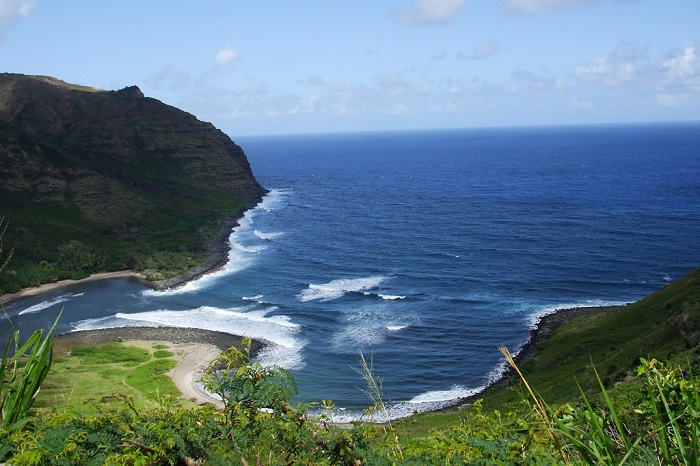Molokai is the stunning natural sight of Hawaii. It is also known as “The Friendly Isle", which means Friendly Island. This island has over a hundred miles of shoreline, hidden waterfalls, ancient ruins, and the proud native heritage of Hawaii. It is the fifth largest island of eight major islands that make up the Hawaiian Island Chain in the middle of the Pacific Ocean. Molokai offers a taste of Hawaii unlike any other island, both in historic value and natural beauty. It is 38 by 10 miles in size at its extreme length and width with a usable land area of 260 square miles. Molokai is the fifth-largest of the main Hawaiian Islands and the 27th largest island in the United States. Molokai developed from two distinct shield volcanoes (A shield volcano is a type of volcano usually built almost entirely of fluid lava flows) known as East Molokai and the much smaller West Molokai. The East Molokai Volcano, sometimes also known as Wailau for the Wailau valley on its north side. It is an extinct shield volcano comprising the eastern two-thirds of the island of Molokai. The highest point is Kamakou on East Molokai, at 4,970 feet. West Molokai is sometimes called Mauna Loa for the census-designated place. It is an extinct shield volcano comprising the western half of Molokai island.
Molokai is split into two main geographical areas. The low western half is very dry and the soil is heavily denuded due to poor land management practices, which allowed over-grazing by goats. The eastern half of the island is a high plateau (Plateau is also called a high plain or a tableland, it is an area of a highland, usually consisting of relatively flat terrain that is raised significantly above the surrounding area, often with one or more sides with steep slopes) rising up to an elevation of 4,900 ft on Kamakou peak and includes the 2,774 acres Molokai Forest Reserve. The eastern half is covered with lush wet forests that get more than 300 in (7,600 mm) of rain per year. Molokai is home to a great number of endemic plant and animal species. However, many of its species, including the olomaʻo (Myadestes lanaiensis), kākāwahie (Paroreomyza flammea). Molokai is home to a wingless fly among many other endemic insects.
Molokai is perhaps best known for one of the most troubling times in Hawaii’s past - the leper colony of Kalaupapa. Leprosy (Leprosy is a long-term infection by the bacterium Mycobacterium leprae or Mycobacterium lepromatosis. It is also known as Hansen's disease) was among Eurasian diseases introduced to the Hawaiian islands by traders, sailors, workers and others who lived in societies where these diseases were endemic. Because of the islanders' lack of immunity to the new diseases, they suffered high rates of infection and death from smallpox, cholera and whooping cough, as well as leprosy. Sugar planters were worried about the effects on their labor force and pressured the government to take action to control the spread of leprosy. The legislature passed a control act requiring quarantine of people with leprosy. The government established Kalawao located on the isolated Kalaupapa peninsula on the northern side of Molokai, followed by Kalaupapa as the sites of a leper colony that operated from 1866 to 1969. Because Kalaupapa had a better climate and sea access, it developed as the main community. A research hospital was developed at Kalawao. The population of these settlements reached a peak of 1100 shortly after the turn of the 20th century.
The tourism industry on Molokai is relatively small, compared to the other islands in Hawaii. Only 64,767 tourists visited Molokai in 2015. For years, residents of Molokai have resisted private developers' attempts to dramatically increase tourism. Accommodations are limited; as of 2014, only one hotel was open on the island. Most tourists find lodgings at rental condos and houses. This island contains many parks and other protected areas, including Palaʻau State Park, Kiowea Beach Park, Kakahaia National Wildlife Refuge, Molokai Forest Reserve, Pelekunu Preserve, George Murphy Beach Park, Halawa Beach Park, and Papohaku Beach Park (3 miles of pristine beach) in the portion within Maui County. Today Kalawao County is preserved by the Kalaupapa National Historical Park. If you decide to stay a few nights or a day trip, Molokai will be a Hawaiian experience you’ll remember for a lifetime.

















0 comments:
Post a Comment